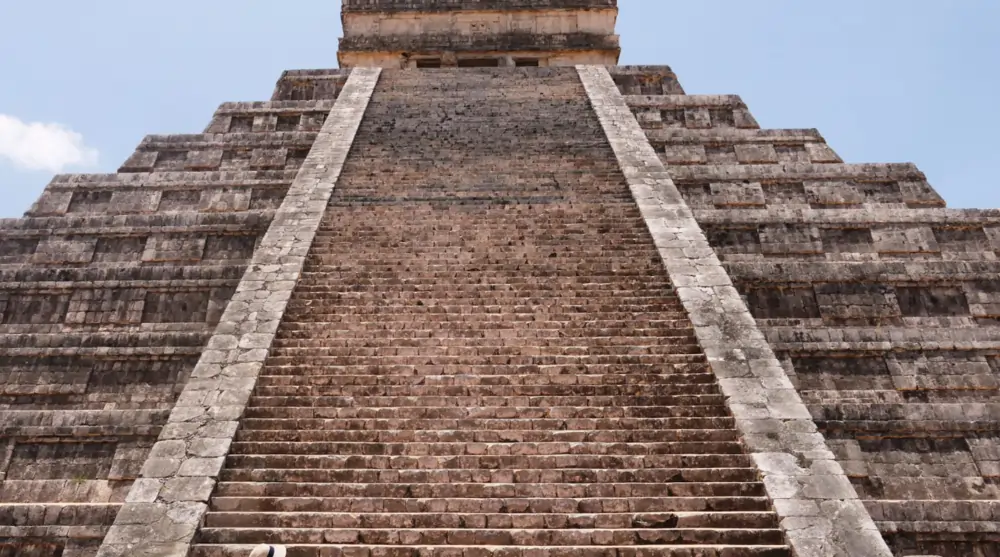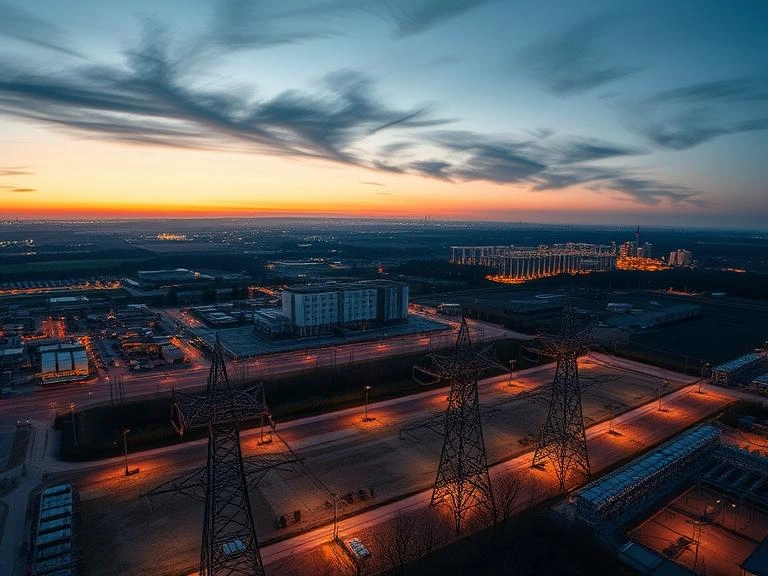How ancient civilisations influence modern science fiction

Omara Williams
- Published
- Opinion & Analysis

Ancient civilisations may be long gone, but the cities and monuments they have left behind provide a foundation for countless science fiction stories, writes international bestselling author, Omara Williams
Across the world – from Africa to the Americas, Asia to Indonesia – the ruins of ancient civilisations continue to amaze. Even with our state-of-the-art technology, we still cannot fully explain their sophisticated infrastructures or replicate their architectural feats.
These enduring mysteries, speaking of advanced knowledge and achievements lost to time, have been a major inspiration to me in writing The Space Traveller’s Lover, and they continue to fascinate me as I work on its sequel. But this shouldn’t be surprising, for ancient civilisations have inspired countless works of science fiction over the decades.
In Bolivia, we find the ancient city of Tiahuanaco, known for its impressive stone monuments. This site was once the centre of a civilisation – the Tiwanaku Empire – and boasted more than 40,000 inhabitants at its height, from around 500 AD to 1000 AD. As part of this remarkable complex is the temple of Puma Punku, which contains some of the largest and most precisely cut megalithic stones found anywhere in the world. Puma Punku is situated at an elevation above the natural tree line, which rules out using trees to transport the massive stones.
This mysterious city inspired the ancient alien theories found in Erich von Däniken’s Chariots of the Gods? (1968), in which he proposed that such impressive and advanced ancient structures may have been built with the help of alien visitors to Earth. This later influenced Hollywood, with sci-fi films such as 1994’s Stargate and its long-running TV spin-off, where ancient structures serve as gateways to the universe.
Around the same period (800-1200 AD), a bustling city with more than 30,000 inhabitants existed to the north in the Yucatán Peninsula: Chichén Itzá. This impressive Mayan city features elaborate temples that are precisely aligned with Venus, the Sun, the Moon, and the Earth’s seasons, showcasing an advanced level of mathematical accuracy and architectural prowess.
The Mayan civilisation’s astronomical knowledge and their mysterious disappearance inspired sci-fi icon Arthur C. Clarke’s acclaimed Rendezvous with Rama (1973), in which an abandoned alien spacecraft with a distinctly Mayan-like design drifts into our solar system. Nearly 40 years later, in 2009, filmmaker Roland Emmerich drew upon the Mayan calendar for the apocalypse-themed blockbuster 2012.
Going back 4,500 years and nearly 8,000 miles across the Atlantic Ocean, we find the Great Pyramid of Giza in Egypt. Standing 147 metres high, the most recognisable pyramid in the world is oriented towards the cardinal points with remarkable accuracy, while the ratio of its edges, base, and height encodes geometrical principles and mathematical constants. Additionally, the main four shafts within the pyramid are each precisely aligned with a star, demonstrating the Egyptians’ exceptional knowledge of astronomy.
Unsurprisingly, the Great Pyramid and Egyptian mythology have significantly influenced sci-fi literature and cinema. H.P. Lovecraft’s At the Mountains of Madness (1936) explores an ancient alien race that left structures resembling pyramids in Antarctica. Similarly, Alien director Ridley Scott’s Prometheus (2012) builds on the concept of pyramid-like structures serving as ancient repositories of extraterrestrial knowledge that have shaped human evolution.
Another 6,000 miles to the southeast, across the Indian Ocean, lie the remains of arguably the oldest giant pyramid constructed by an advanced ancient civilisation: Gunung Padang in West Java, Indonesia. This site, located atop a dormant volcano, features thousands of volcanic stones that form a series of four successively smaller terraces connected by steps and upright columns. The dating of its construction varies widely, ranging from 45 BC to 22 AD, with some estimates even suggesting it could date back as far as 27,000 years ago.
Gunung Padang and other lost cities heavily inspired the hidden civilisations in early sci-fi author H. Rider Haggard’s She (1887), where a British explorer stumbles upon an ancient, technologically advanced society that has continued to thrive away from the world’s attention for millennia.
To the north, near ancient Mesopotamia and what we now know as Turkey, is Göbekli Tepe, which is among the world’s oldest megalithic constructions, dating from 7,000 to 9,500 BC. It boasts large circular structures surrounding massive stone pillars carefully decorated with abstract pictograms and depictions of wild animals. Some of these pictograms correspond with solar calendars and other astronomical features, such as meteor showers and constellations, revealing that thousands of years before the Egyptians built the pyramids, the inhabitants of Göbekli Tepe were keen observers of the sky.
This remarkably well-preserved site has inspired many sci-fi stories, not least through its intriguing, undeciphered pictograms. You only need to watch a film such as Arrival (2016), where a team of investigators try to crack an ancient alien language, to see its fingerprints.

Omara Williams is a nuclear and software engineer whose multi-award-winning debut science-fiction novel, The Space Traveller’s Lover, shot to international bestseller status. Outside of her literary pursuits, she enjoys stargazing and chasing total solar eclipses.
Sign up to The European Newsletter
RECENT ARTICLES
-
 Inside the child grooming scandal: one officer’s story of a system that couldn’t cope
Inside the child grooming scandal: one officer’s story of a system that couldn’t cope -
 How AI is teaching us to think like machines
How AI is teaching us to think like machines -
 The Britain I returned to was unrecognisable — and better for It
The Britain I returned to was unrecognisable — and better for It -
 We built an education system for everyone but disabled students
We built an education system for everyone but disabled students -
 Justice for sale? How a £40 claim became a £5,000 bill in Britain’s broken Small Claims Court
Justice for sale? How a £40 claim became a £5,000 bill in Britain’s broken Small Claims Court -
 Why control freaks never build great companies
Why control freaks never build great companies -
 I quit London’s rat race to restore a huge crumbling estate in the Lake District
I quit London’s rat race to restore a huge crumbling estate in the Lake District -
 The grid that will decide Europe’s future
The grid that will decide Europe’s future -
 Why Gen Z struggles with pressure — and what their bosses must do about it
Why Gen Z struggles with pressure — and what their bosses must do about it -
 What Indian philosophy can teach modern business about resilient systems
What Indian philosophy can teach modern business about resilient systems -
 AI can’t swim — but it might save those who do
AI can’t swim — but it might save those who do -
 The age of unreason in American politics
The age of unreason in American politics -
 Digitalization, financial inclusion, and a new era of banking services: Uzbekistan’s road to WTO membership
Digitalization, financial inclusion, and a new era of banking services: Uzbekistan’s road to WTO membership -
 Meet Omar Yaghi, the Nobel Prize chemist turning air into water
Meet Omar Yaghi, the Nobel Prize chemist turning air into water -
 Behind the non-food retail CX Benchmark: what the numbers tell us about Europe’s future
Behind the non-food retail CX Benchmark: what the numbers tell us about Europe’s future -
 Why NHS cancer care still fails disabled people
Why NHS cancer care still fails disabled people -
 Echoes of 1936 in a restless and divided Britain
Echoes of 1936 in a restless and divided Britain -
 Middle management still holds the power leaders need
Middle management still holds the power leaders need -
 Trump and painkillers: The attack on science is an attack on democracy
Trump and painkillers: The attack on science is an attack on democracy -
 The end of corporate devotion? What businesses can learn from Gen Z
The end of corporate devotion? What businesses can learn from Gen Z -
 Britain’s free speech crisis: the weaponisation of complaints and the erosion of police discretion
Britain’s free speech crisis: the weaponisation of complaints and the erosion of police discretion -
 The fight for independence disabled people shouldn’t have to wage
The fight for independence disabled people shouldn’t have to wage -
 No ramp, no chance: how inaccessible workplaces crush disabled talent
No ramp, no chance: how inaccessible workplaces crush disabled talent -
 Work-life balance is a myth — this is what great leaders do instead
Work-life balance is a myth — this is what great leaders do instead -
 I never expected the Spanish Inquisition. How bureaucracy turned my life into a Python sketch
I never expected the Spanish Inquisition. How bureaucracy turned my life into a Python sketch



























